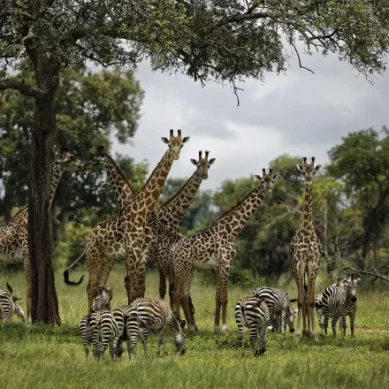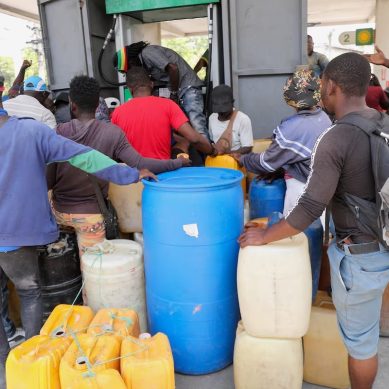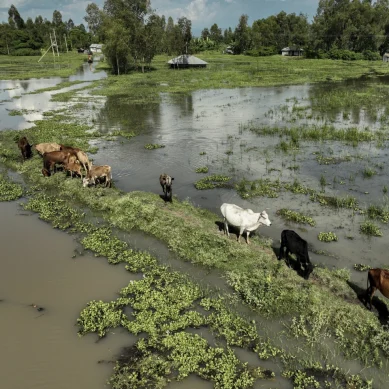If you were to stand in a crowd of a thousand people in Kenya today and ask everybody wearing a cotton garment to leave chances are you would be left alone. Clothing made of cotton are so common that on any given day each and every person wears at least one item of dress made from it.
The demand for cotton continues to grow as the world population grows, despite threats posed by synthetic fibres. Cotton provides consumers with many advantages over synthetic fibre, which keep demand sky-high despite growth of the latter industry.
Cotton is soft and absorbent, it is hypo-allergenic and suitable for babies and people with sensitive skin; it is reusable and degrades naturally in the environment and this is important to people with concerns about Planet Earth.
The natural attributes have created an export market for Kenya that has not been fully exploited. The slow response to the market is attributed to insufficient raw material and infrastructure vis-à-vis growing demand.
The stuttering industry means lost opportunities.
For instance, it takes at least 135 days for Kenyan apparel and textile manufacturers to deliver orders to the US markets. Yet the sector has the potential to power industrial and manufacturing growth with increased production of raw materials locally, according to the latest Export Processing Zone (EPZ) report.
Despite the textile manufacturing being a key driver of industrialisation, a series of EPZ reports say acute shortage of raw cotton translates to lost opportunities for Kenya as the US fashion industry adjusts to rapidly changing market trends and tastes.
The apparel and textile industry enjoy unlimited access to the US markets under the African Growth Opportunity Act, set to lapse in 2025, but Kenya has failed to take full advantage of the opening because it relies on imported cotton to manufacture textile and apparel for export.
In its strategic plan, the government is gearing to revamp the sector with increased local cotton production.
At present, Kenya produces 25,000 bales of cotton against a demand of 200,000 bales annually. The 1,750,000 bales deficit is met with imports from Tanzania, Uganda, and India.
It takes 75 days for fabric from Asia to reach manufacturers in Kenya, leading to the lag in delivery of finished products to the US markets. More, EPZ says varieties of fabrics needed to keep pace with the rapidly changing demand are not made available to Kenyan factories in a timely manner.
Keen to exploit the opportunities presented by Agoa, the government in its Kenya National Agoa Strategy and Action Plan 2018-2023 and the ministries of agriculture and industry plans to invest more in the cotton subsector to increase domestic production.
Increased domestic production is expected to reduce costs and according to the action plan, it will make Kenyan textile and apparel products more competitive against exports from China, Ethiopia, India and other Far East countries.
According to the document, “The textile and apparel sector is one of the drivers of industrialisation in Kenya. In 2017, it comprised a total of 22 large and foreign owned companies, 170 medium and large companies, eight ginneries, eight spinners, 15 weaving and knitting companies, nine accessories manufacturers and over 74,000 micro and small companies, including fashion designers and tailoring units.”
It says further that investments in the EPZs have led to export growth in the textile and apparels sector, although the growth is not matched with local production of cotton.
“The value chain from fibre to fashion involves cotton cultivation, ginning, spinning, weaving, knitting, dyeing and finishing, garment and accessories manufacturing. However, the fashion subsector is nascent and cotton production has decreased in the last decade with deficits covered by imports from nearby countries such as Tanzania, Uganda and others,” it adds.
Cotton cloth is made from a tropical/subtropical shrub that produces a soft fluffy fibre that is spun into yarn or thread and then made into a soft breathable textile. First grown in the Indus River valley in India in the Fifth Millennia BCE it is today one of the most sought-after commodities.
Cotton has a wide range of uses and all parts of the plant can be put to commercial use. The cloth is used to make many items including terrycloth is used to make towels and bathrobes, denim makes blue jeans, cambric is used to make shirts and other popular items like bedsheets and pillowcases.
Most people know about the popularity of cotton T-shirts, socks and underwear, items that cut across age and class barriers. Cotton at an industrial level is used to make fishing rods, coffee filters, tents, and paper and book bindings.
The seeds are pressed for oil which is used in the manufacture of soap, cosmetics, medicines and margarine; the seed cake is used for cattle feed; the short fibres that remain after ginning-called linters- are made into bandages, swabs and cotton buds.
To understand just how critical cotton is, consider this: 2.5 per cent of all arable land in the world is under cotton farming. The total international trade on cotton is estimated to be over US$12 billion and the leading producers are China, India, USA and Brazil in that order. Although China is the leading producer, the USA is the lead exporter because the PRC consumes most of their crop locally.
Egypt is the leading exporter of cotton in Africa, producing a particularly attractive type called extra-long staple. It creates a high-quality textile that is strong, soft and extra porous, which is highly valued for making highs-end products, especially bedsheets.
Locally, Kenya is no stranger to this plant and in the1960s through to the 1990s Kenya was a leading producer of cotton in the region. The textile industry was a key economic player and a mainstay for thousands of people.
The cotton mills were household names included Kicomi, Rivatex and Raymonds. They provided jobs and produced a wide range of high-quality textiles for local use and export.
The decline of this industry came in the late 1990s when the Bretton Woods institutions – the World Bank and International Monetary Fund – insisted that Kenya liberalises its economy. Concession to the World Bank and IMF conditionalities opened the door to importation of second-hand clothing or mitumbas, thereby sounding the death knell to the cotton industry.
Under President Uhuru Kenyatta’s Big Four Agenda the government plans to revive the industry to re-anchor economic growth which in the recent years appeared to slow down.
The potential is immense because Kenya can produce 260,000 bales of cotton per year on small-holder farms in former provinces of Nyanza, Western, Coast, Eastern and Rift Valley.
In its plans the ministries of agriculture, industry and trade, expect the revival to start by improving seeds. The government intends to build modern ginneries and textile manufacturing plants that will ensure Kenya exports finished and not primary goods. The objective will be to increase revenue from the textile industry from Ksh3.5 billion (US$34 million) to Ksh2 trillion (US$20 billion) annually, besides creating 500,000 jobs directly in cotton and another 100,000 indirectly.
The government also intends to train 50,000 youth and women to grow the crop that will enable the country to add 200,000 hectares of genetically modified cotton.
The project will be undertaken by the Cotton Development Authority, whose major target is to ensure the cotton industry is revived and re-energised to play a bigger role economic growth.
The demand for cotton continues to grow more so because of a rising concern for the environment. Synthetic fibres are costly to produce and damage the soil and waters. Many consumers are also unhappy with the manner in which animals are treated to extract materials like leather and furs, hence frequent calls for boycotts of the same. This creates awareness and makes people to turn to plant-based textiles like cotton. Consumers with sensitive skin also request for cotton clothing and furnishings.
That this can happen is easily evident. China is the leading producer of the crop in the world but consumes most it locally and in the world’s most populous nation, this is an indicator of just how much cotton can possibly be consumed in a country.
– By Juma Kwayera











